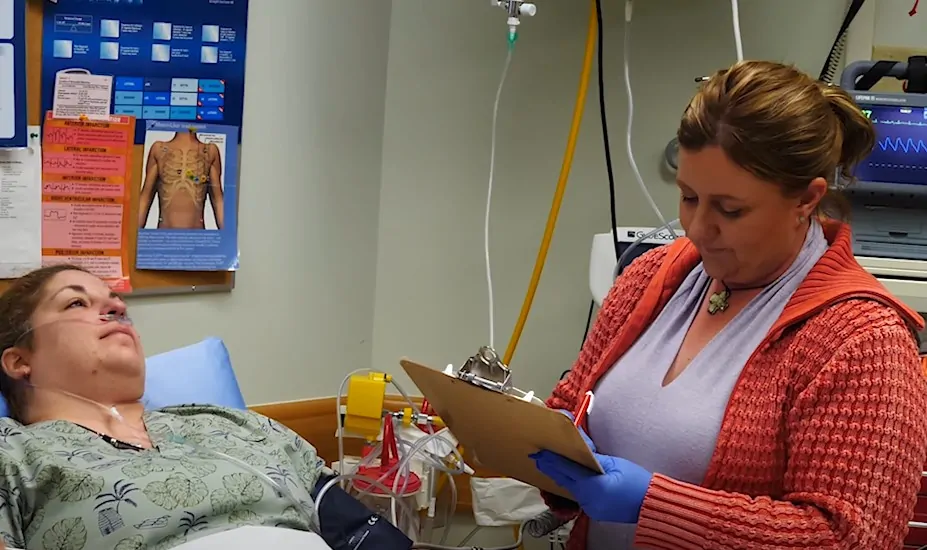Healthcare across the Midwest varies widely in terms of access, affordability, and quality, with each state implementing policies to address regional challenges.
Iowa stands out with notable achievements in reducing uninsured rates and controlling healthcare expenditures, yet it faces significant hurdles, especially in rural access and financial stability for hospitals.
The analysis explores how Iowa’s healthcare system compares with neighboring states, examining key factors like:
- Insurance coverage
- Uncompensated care trends
- Policy initiatives
Through this comparison, we can gain insights into Iowa’s strengths and areas where further improvements could enhance healthcare equity across the region.
Table of Contents
ToggleHealth Insurance Coverage in Iowa vs. Midwest
Iowa’s healthcare insurance landscape has transformed significantly over the past decade, largely due to the Affordable Care Act (ACA) and Medicaid expansion.
Since 2013, Iowa’s uninsured rate has dropped from 8.1% to 4.5% by 2022, ranking it among the lowest uninsured rates nationwide.
The decline highlights the strength of Iowa’s private insurance market and the positive impact of Medicaid expansion, which has been similarly effective in other Midwestern states.
Impact of Medicaid Expansion
Iowa, along with states like Illinois and Wisconsin, expanded Medicaid, leading to notable reductions in uninsured populations and uncompensated care costs.
By contrast, Missouri, which initially delayed Medicaid expansion, faced higher uncompensated care costs and larger gaps in healthcare access for uninsured individuals.
Iowans also experience a slight edge in affordability compared to other states, despite rising healthcare costs:
- Since 1991, healthcare costs in Iowa have risen by 270%, yet the average Iowan spends approximately 5% less on healthcare than the national average.
- Iowa’s competitive private insurance market and robust Medicaid participation contribute to this relative affordability.
Medicaid expansion has thus played a dual role in Iowa’s healthcare system, reducing the uninsured rate and promoting financial stability for hospitals and providers, like Complete Health primary care providers.
Healthcare Access and Uncompensated Care

Uncompensated care costs pose a significant challenge, especially in states with higher uninsured rates.
Medicaid expansion has alleviated some of these financial burdens, with states like Michigan experiencing a 39% decrease in uncompensated care costs.
In Iowa, Medicaid expansion has similarly reduced these expenses, though financial vulnerabilities persist, particularly in rural hospitals.
In 2022, over 60% of rural hospitals in Iowa operated at a loss, contending with high operational costs and increased patient demand that lacks proportional financial support.
- Medicaid expansion reduced uncompensated care costs in Iowa and Michigan, benefiting hospitals financially.
- Over 60% of rural hospitals in Iowa faced financial losses in 2022 due to increasing costs and insufficient support.
The disparity in access between rural and urban areas is pronounced across Iowa and the Midwest.
Urban hospitals generally maintain better financial health, while rural hospitals face challenges due to provider shortages and limited funding, affecting key services like obstetrics and gynecology.
Iowa has seen operational costs rise by 66% from 2009 to 2022, further straining rural healthcare facilities and restricting access to essential services in underserved regions.
- Operational costs for healthcare facilities in Iowa surged by 66% from 2009 to 2022.
- Rural hospitals in Iowa and nearby states often struggle to retain healthcare providers and secure funding, while urban centers maintain more stable financial health.
Healthcare Costs and Expenditures

Healthcare spending in Iowa reaches approximately $9,200 per person annually, a figure slightly below the national average but still a notable financial burden for many residents.
Since 2009, healthcare costs in the state have increased substantially, intensifying financial strain on those reliant on private insurance. Noteworthy trends include:
Rising Healthcare Costs:
- Health insurance costs in Iowa have surged by 67% since 2009.
- Employee contributions have increased by an even steeper 115%, placing significant pressure on household budgets.
A challenge in Iowa’s healthcare expenditures is the substantial gap between private insurance and Medicare payments for hospital services:
Private vs. Medicare Payment Disparity:
- Private insurers in Iowa often pay approximately 263% more than Medicare for comparable services, a trend observed across the Midwest.
- This gap drives up premiums and out-of-pocket expenses for privately insured individuals.
Addressing these disparities could help reduce the financial strain on privately insured Iowans while promoting a more balanced approach to funding that supports the sustainability of providers across the state.
Rural Healthcare Challenges in Iowa vs. Other States

Rural healthcare in Iowa faces considerable challenges, with significant disparities in physician availability and high rates of chronic health conditions.
Iowa’s rural regions have 17% fewer physicians per capita compared to urban areas, an issue mirrored across other Midwestern states.
Provider shortages, especially in essential fields like obstetrics, intensify the challenge of ensuring accessibility for rural residents.
Key issues affecting rural healthcare access in Iowa include:
- Provider Shortages:
- Lower physician-to-patient ratio in rural areas (17% fewer per capita than in urban areas).
- Specialty shortages, particularly in fields like obstetrics, make it difficult for residents to access comprehensive care locally.
- Hospital Closures:
- Over the past 15 years, more than 250 healthcare facilities in Iowa have closed, predominantly in rural communities.
- These closures reflect a broader trend across the Midwest, where financial constraints and provider shortages contribute to gaps in essential services.
- Health Disparities and Chronic Conditions:
- Higher obesity rates (37%) and diabetes prevalence (8.5%) in Iowa’s rural areas lead to poorer health outcomes.
- These chronic health issues are more pronounced in rural settings due to limited access to preventive and continuous care.
Addressing these challenges will require focused funding and policy efforts aimed at enhancing provider recruitment, sustaining rural hospitals, and closing health disparity gaps.
Expanding support for rural healthcare could ensure that accessible, quality care remains within reach for these underserved communities.
Policy Initiatives and Competitiveness

Iowa’s policy initiatives showcase a proactive approach to enhancing accessibility and controlling costs.
The state has focused on strategies to mitigate healthcare provider shortages, particularly in rural areas, and to manage rising operational costs.
Iowa offers incentives to encourage medical professionals to work in underserved areas, helping address the critical shortages of providers in rural regions.
By limiting non-economic damage awards, Iowa has managed to keep malpractice insurance costs under control, which contributes to more sustainable operational expenses for facilities.
Recognizing the growing need for mental health support, Iowa has allocated additional resources to expand mental health services across the state.
In the Common Sense Institute’s Healthcare Competitiveness Index, Iowa ranks second, a testament to its accessible system and competitive private insurance landscape.
However, Iowa still faces challenges, especially in ensuring rural healthcare access and sustaining its workforce.
A look at neighboring Midwestern states reveals various policy approaches that complement Iowa’s efforts:
- With robust Medicaid policies, Wisconsin provides substantial support for lower-income residents.
- Illinois has made significant investments in mental health services, creating a stronger support system for mental health care across the state.
- Michigan’s policies focus on expanding rural health funding and addressing uncompensated care costs.
Summary
Iowa demonstrates strengths in healthcare coverage and cost management compared to its Midwestern peers.
However, rural access and the financial sustainability of hospitals remain pressing concerns.
Future policies should emphasize sustainable funding for rural healthcare, cost containment measures, and targeted solutions for uncompensated care, promoting equitable access and healthcare quality across Iowa and the Midwest.















